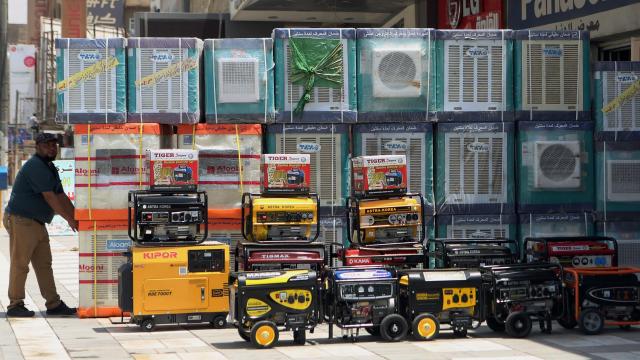Thirty years after countries agreed to ease up on the use of chemicals damaging the ozone layer, there are promising signs that the ozone will be fully recovered by the 2060s. But we’re not out of the woods yet. A study published this month in Nature Geoscience shows that emissions from dangerous gases banned in the 1980s are actually on the rise today — with implications not only for the ozone layer but for climate change as well. Even more worryingly, we’re not sure what, exactly, is causing some of these emissions to creep up.
The group of pollutants that damage the ozone layer are called chlorofluorocarbons, or CFCs, and they were previously widely used in refrigerants, air conditioners, aerosol cans, and other applications. The Montreal Protocol, the international treaty that went into effect at the end of the 1980s, called for countries to phase out the use of these CFCs. The Protocol is largely considered a historic success in addressing a thorny and global environmental problem.
To get a handle on the global status of CFC emissions, researchers used “atmospheric measurements of CFCs and a model of how gases move around the globe,” study lead author Luke Western, a researcher at the UK’s University of Bristol and the National Oceanic and Atmospheric Administration, told Earther in an email. The CFC measurements were collected from stations around the world.
The study found that emissions from five different types of CFCs were increasing. Three of these CFCs have an explicable cause: a loophole in the Montreal Protocol that allows for some CFC emissions in the production of some hydrofluorocarbons (HFCs), chemicals that were largely used to replace CFCs. While HFCs don’t pack as much of a punch to the ozone layer, they are potent greenhouse gases, with worrying implications for global warming. (The Biden administration signed on to a global amendment to the Montreal Protocol that would eventually phase out HFC use in September.)
The research done by Western and his team isn’t able to concretely pin emissions to a specific region or factory — but we can make some guesses. China has, historically, been the world’s largest producer of HFCs. As InsideClimate News reported, outside of China, the largest producer of the HFCs whose byproducts were tracked by the study is a Honeywell factory located in Louisiana.
While we can guess about some of the chemicals in the study, the other two CFCs measured are, weirdly, a mystery. Neither of the chemicals are approved for any sort of use, and while it’s possible that they could be connected to a number of industrial processes, more work and consultations with the chemical industry are needed.
“We really have no clue,” said Western’s co-author, Martin Vollmer, an atmospheric chemist at the Swiss Federal Laboratories for Materials Science and Technology in Dübendorf, during a press conference last month. “We don’t know of any chemical process where [these chemicals] will show up as a by-product.”
The rise of these chemicals are concerning not only for the efficacy of the Montreal Protocol but also for climate change. “CFCs are potent greenhouse gases, with global warming potentials many thousand times greater than CO2,” Western said. “The emissions in 2020 of these five CFCs are roughly the same as the CO2 emissions from a country like Switzerland.”
The levels of CFC emissions detected may be relatively small compared to pre-Montreal Protocol levels — but it’s still good to be aware of what’s going on.
“We’re hoping to give an early warning so that others are aware of these emissions,” Western said.
